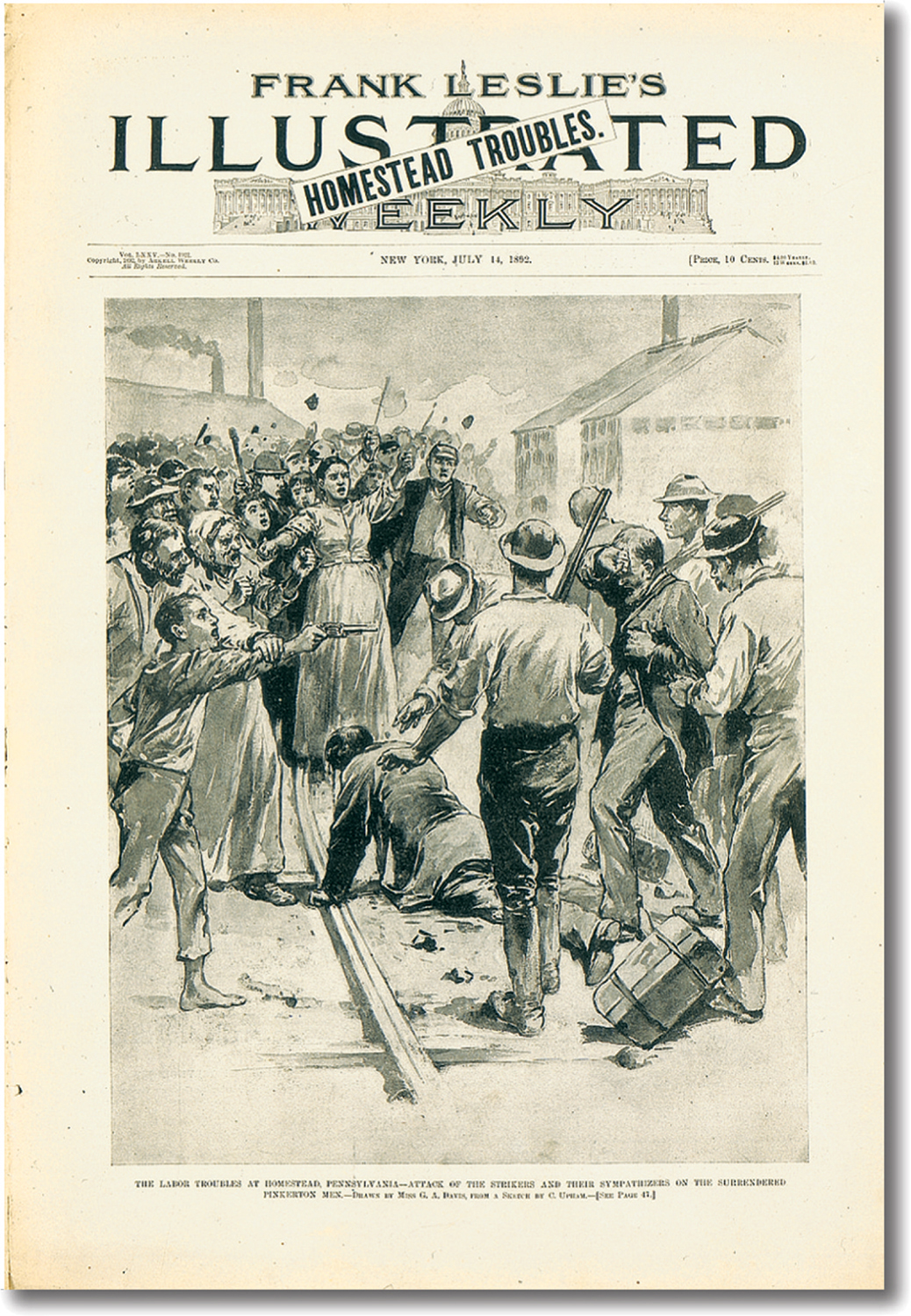The American Promise:
Printed Page 558
The American Promise Value
Edition: Printed Page 529
The Homestead Lockout
In 1892, steelworkers in Pennsylvania squared off against Andrew Carnegie in a decisive struggle over the right to organize in the Homestead steel mills. Carnegie resolved to crush the Amalgamated Iron and Steel Workers, one of the largest and richest craft unions in the American Federation of Labor (AFL). When the Amalgamated attempted to renew its contract at Carnegie’s Homestead mill, its leaders were told that since “the vast majority of our employees are Non union, the Firm has decided that the minority must give place to the majority.” While it was true that only 800 skilled workers belonged to the elite Amalgamated, the union had long enjoyed the support of the plant’s 3,000 non-
Carnegie, who often praised labor unions, preferred not to be directly involved in the union busting, so that spring he sailed to Scotland and left Henry Clay Frick, the toughest antilabor man in the industry, in charge. By summer, a strike looked inevitable. Frick prepared by erecting a fifteen-
On June 28, the Homestead lockout began when Frick locked the doors of the mills and prepared to bring in strikebreakers. Hugh O’Donnell, the young Irishman who led the union, vowed to prevent “scabs” from entering the plant. On July 6 at 4 a.m., a lookout spotted two barges moving up the Monongahela River in the fog. Frick was attempting to smuggle his Pinkertons into Homestead.

Workers sounded the alarm, and within minutes a crowd of more than a thousand, hastily armed with rifles, hoes, and fence posts, rushed to the riverbank. When they attempted to come ashore, gunfire broke out, and more than a dozen Pinkertons and some thirty strikers fell, killed or wounded. The Pinkertons retreated to the barges. For twelve hours, the workers, joined by their family members, threw everything they had at the barges, from fire-
The action of the Homestead workers struck at the heart of the capitalist system, pitting the workers’ right to their jobs against the rights of private property. The workers’ insistence that “we are not destroying the property of the company—
Then, in a misguided effort to ignite a general uprising, Alexander Berkman, a Russian immigrant and anarchist, attempted to assassinate Frick. Berkman bungled his attempt. Shot twice and stabbed with a dagger, Frick survived and showed considerable courage, allowing a doctor to remove the bullets but refusing to leave his desk until the day’s work was completed. “I do not think that I shall die,” Frick remarked coolly, “but whether I do or not, the Company will pursue the same policy and it will win.”
After the assassination attempt, public opinion turned against the workers. Berkman was quickly tried and sentenced to prison. Although the Amalgamated and the AFL denounced his action, the incident linked anarchism and unionism. O’Donnell later wrote, “The bullet from Berkman’s pistol, failing in its foul intent, went straight through the heart of the Homestead strike.” The Homestead mill reopened in November, and the men returned to work, except for the union leaders, now blacklisted in every steel mill in the country. With the owners firmly in charge, the company slashed wages, reinstated the twelve-
The workers at Homestead had been taught a lesson. They would never again, in the words of the National Guard commander, “believe the works are their’s [sic] quite as much as Carnegie’s.” Another forty-